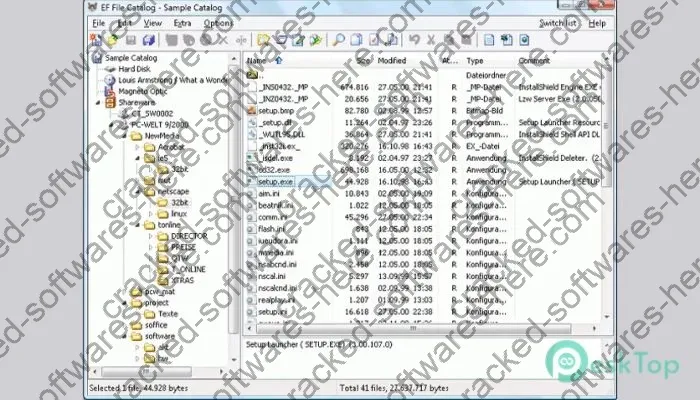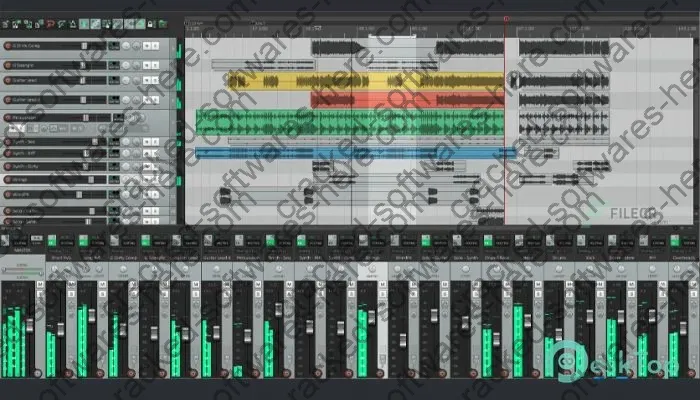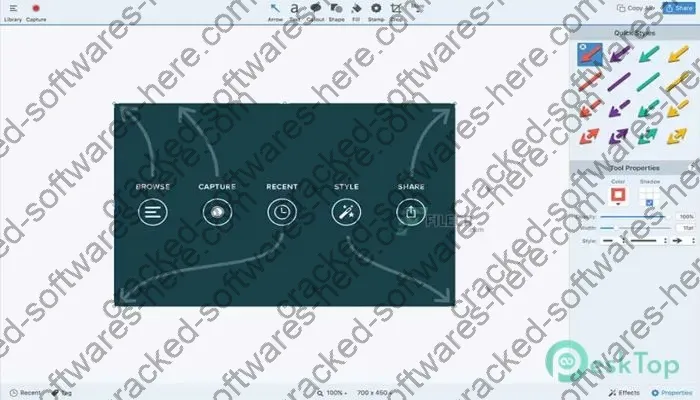Entity Framework (EF) File Catalog is an exciting new feature introduced in EF Core 5 that allows you to manage database schemas across multiple class library projects. It solves common problems developers face when working with large, complex databases in enterprise applications.
With EF File Catalog Activation key, you can keep your database model classes like entities, contexts, and mappings in separate class libraries instead of a single monolithic project. The catalog.xml file acts as an index to wire up entities mapped across multiple libraries at runtime.
Here are some key benefits of using EF File Catalog Activation key:
- Manages database schema across multiple class libraries
- Enables continuous integration and delivery workflows
- Improves developer productivity by eliminating recompilation
- Allows frequent incremental model changes without disruption
- Enhances flexibility for enterprise applications and microservices
- How Does EF File Catalog Activation key Work?
- When Should You Use EF File Catalog Activation key?
- Advantages of Using EF File Catalog Activation key
- Limitations to Consider with EF File Catalog Activation key
- Setting up EF File Catalog Full version crack in a .NET Project
- Consuming EF File Catalog Activation key from Other Projects
- Managing EF File Catalog Full version crack in Source Control
- Conclusion
How Does EF File Catalog Activation key Work?
Under the hood, EF File Catalog Full version crack works by generating a catalog.xml file that acts as an index of entities mapped across multiple projects. This catalog file gets generated on build based on conventions and attributes used to tag entities and contexts.
At runtime, the Free download EF Core provider reads this catalog file to wire up the entity classes into a coherent model. The catalog is essentially a map for EF Core to understand how all the pieces fit together when spread across projects.
Here is a simple example of what the catalog file contains:
// Reference catalog project
using MyApp.CatalogProject;
public class Consumer
{
public void UseContext()
{
// Ensure catalog is published
MyCatalogContext.PublishDbContextAsync();
// Now instantiate context and entities
using var context = new MyCatalogContext();
var customers = context.Customers.ToList();
}
}
That’s it! The classes will be hydrated at runtime by EF using the XML mapping.
Managing EF File Catalog Full version crack in Source Control
When working with EF Catalog Activation key across a team, here are some best practices around source control:
-
Commit
catalog.xml– This file should be checked in like other code files, not generated on each build. -
Coordinate Schemas – Have a strategy for coordinating model changes across teams to avoid conflicts.
-
Branching Flow – Structure your branching model to isolate and merge model changes cleanly.
-
Single Source of Truth – Consider having a single project be the source of truth for the catalog schema.
-
Migrations – Migrations should be managed in coordination with schema changes.
-
Continuous Integration – Structure your CI pipelines around catalog generation. Cache and restore catalog files efficiently.
Following source control best practices will ensure the development team stays in sync around the shared catalog.
Conclusion
EF File Catalog Activation key is a powerful new option for managing large database models across multiple projects in .NET applications. While introducing additional complexity, it enables productivity, flexibility, and DevOps benefits at enterprise scale.
For complex databases with regular schema changes, EF File Catalog Download free is absolutely worth considering. Just be aware of the limitations and investment required to use it effectively.
When implemented well, the catalog approach can remove bottlenecks and supercharge your EF-driven development lifecycle.
<Project>
<EntitySet Name="Customers" Model="NorthwindContext" Schema="dbo" Type="Customer"/>
<EntitySet Name="Orders" Model="NorthwindContext" Schema="dbo" Type="Order"/>
</Project>
This shows how entities from the NorthwindContext get mapped across different libraries. The provider consumes this at runtime to recreate the model relationships.
When Should You Use EF File Catalog Activation key?
Here are some common scenarios where using EF File Catalog Download free makes sense:
- For large enterprise applications with complex database schemas spanning multiple projects
- When working with large development teams where dividing models is helpful
- For microservice architectures with database models in separate services
- In continuous delivery pipelines to avoid rebuilt on schema changes
- Any project where the database model and schema tends to change frequently
The catalog approach introduces complexity but provides flexibility when you need it. It removes bottlenecks and friction that monolithic projects can create as an application grows.
Advantages of Using EF File Catalog Activation key
There are several notable advantages that EF File Catalog Activation key provides:
Improved Developer Productivity
Making schema changes no longer requires rebuilding consuming projects. This speeds up Inner loop development when iterating on models.
Continuous Integration/Continuous Delivery
Model changes can be localized to projects. This makes CI/CD easier without cascading rebuilds blocking pipelines.
Microservice Enabled
Models can be maintained right next to the service implementation. No need to share model project dependencies.
Enables Domain-Driven Design
Entities can be kept in the domain project where they logically belong, organized by bounded context.
Easier Coordination in Large Teams
Database model complexity can be divided rather than centralized. Different teams can own different projects.
Limitations to Consider with EF File Catalog Activation key
While the catalog approach has advantages, there are some limitations to keep in mind:
-
Increased Setup Complexity – It requires more moving parts with the catalog build process. There is also a learning curve for developers new to the concept.
-
Limited Documentation – As a relatively new feature, there are fewer resources online around best practices compared to typical EF usage.
-
Potential Performance Overhead – At runtime, using catalog reflection to build models may carry a performance penalty depending on use.
-
Lack of Full Feature Support in Some ORMs – Some third-party ORMs based on EF Core may not fully support this catalog-based approach yet.
Setting up EF File Catalog Full version crack in a .NET Project
Let’s go through a quick example of how to set up EF File Catalog Free download in a .NET project:
-
Install the
Microsoft.EntityFrameworkCore.DesignNuGet package which provides build-time dependencies for generating the catalog. -
Ensure your model class libraries reference
Microsoft.EntityFrameworkCore.SqlServerand related providers. -
Set the
BuildActiontoEmbeddedResourcefor yourcatalog.xmlfile so it gets embedded into assemblies. -
Use the
[DbContextExport]attribute on your DbContext classes so they get added to the catalog. -
Build your project. The first compilation will generate
catalog.xmlin obj folder.
Your project is now wired up for EF File Catalog Download free usage! You can add contexts and entities following EF conventions across multiple projects and they will be discovered automatically.
Consuming EF File Catalog Activation key from Other Projects
Once you have a project configured for EF File Catalog Activation key generation, here is how to consume it:
-
Reference the catalog-enabled project from the consuming .NET project.
-
Call
PublishDbContextAsync()to ensure the catalog is primed if needed. -
Instantiate your DbContext and entity classes as usual. EF will hydrate them from the catalog!
For example:
// Reference catalog project
using MyApp.CatalogProject;
public class Consumer
{
public void UseContext()
{
// Ensure catalog is published
MyCatalogContext.PublishDbContextAsync();
// Now instantiate context and entities
using var context = new MyCatalogContext();
var customers = context.Customers.ToList();
}
}
That’s it! The classes will be hydrated at runtime by EF using the XML mapping.
Managing EF File Catalog Full version crack in Source Control
When working with EF Catalog Activation key across a team, here are some best practices around source control:
-
Commit
catalog.xml– This file should be checked in like other code files, not generated on each build. -
Coordinate Schemas – Have a strategy for coordinating model changes across teams to avoid conflicts.
-
Branching Flow – Structure your branching model to isolate and merge model changes cleanly.
-
Single Source of Truth – Consider having a single project be the source of truth for the catalog schema.
-
Migrations – Migrations should be managed in coordination with schema changes.
-
Continuous Integration – Structure your CI pipelines around catalog generation. Cache and restore catalog files efficiently.
Following source control best practices will ensure the development team stays in sync around the shared catalog.
Conclusion
EF File Catalog Activation key is a powerful new option for managing large database models across multiple projects in .NET applications. While introducing additional complexity, it enables productivity, flexibility, and DevOps benefits at enterprise scale.
For complex databases with regular schema changes, EF File Catalog Download free is absolutely worth considering. Just be aware of the limitations and investment required to use it effectively.
When implemented well, the catalog approach can remove bottlenecks and supercharge your EF-driven development lifecycle.




